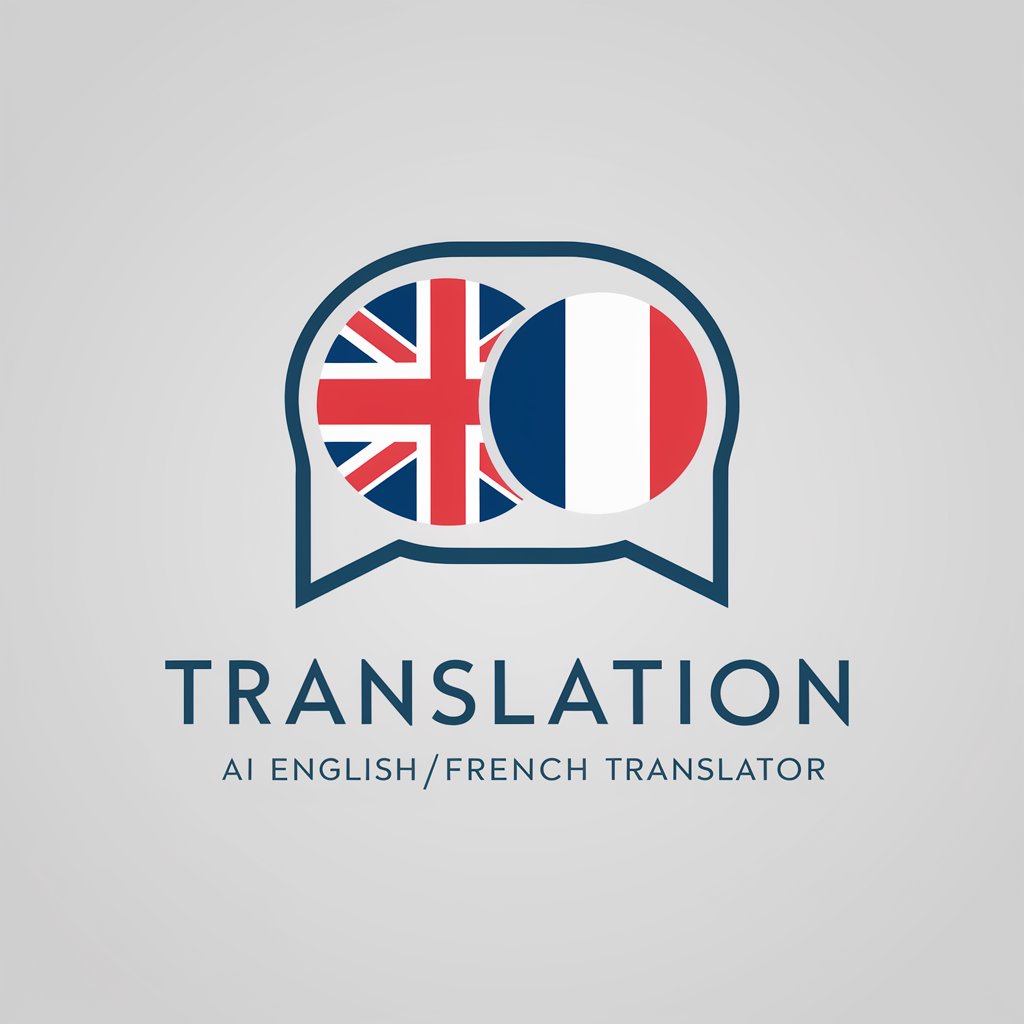
English/French translator - English-French Text Translation

Hello! I’m here to help with English/French translations.
AI-Powered, Accurate Language Translation
Translate the following English text into French:
Translate the following French text into English:
In French, how would you say:
How do you translate this sentence from French to English:
Get Embed Code
Overview of English/French Translator
The English/French translator is a specialized GPT model designed to translate text between English and French with high accuracy. It corrects minor spelling and grammatical errors while maintaining the original text size. This GPT is adept at handling both direct text inputs and JSON formatted text, ensuring translations maintain the integrity of the original format. An example of its utility is in translating a French email to English, preserving the original message's tone and context. Powered by ChatGPT-4o。

Core Functions of English/French Translator
Direct Text Translation
Example
Translating an email from French to English.
Scenario
A business professional receives an email from a French partner. The translator converts it to English, enabling seamless communication.
JSON Formatted Text Translation
Example
Translating user-generated content in a bilingual application.
Scenario
A developer working on a bilingual app inputs JSON strings. The translator converts only the values, keeping keys unchanged, ensuring the app functions correctly in both languages.
Error Correction in Translation
Example
Correcting grammatical errors in a French document while translating it to English.
Scenario
An author writes a book in French with minor errors. The translator not only translates the text to English but also corrects these errors, enhancing the quality of the translated text.
Target User Groups for English/French Translator
Business Professionals
Professionals dealing with international clients or partners, especially between English and French-speaking regions, benefit from accurate and contextually correct translations for emails, reports, and documents.
Developers and Content Creators
This group benefits from the model's ability to handle JSON formatted text, aiding in creating bilingual applications, websites, and digital content.
Educators and Students
Educators can use this tool for preparing bilingual teaching materials, while students can use it to understand and learn a new language, especially in academic settings.
Authors and Translators
Authors writing in either language can use the service to expand their audience, while professional translators can use it as a tool to enhance efficiency and accuracy in their work.

How to Use the English/French Translator
1
Access the Service: Visit yeschat.ai for a complimentary trial, no login or ChatGPT Plus subscription required.
2
Choose Language: Select either English or French as your source language for translation.
3
Input Text: Paste or type the text you wish to translate directly into the input field.
4
Translation Execution: Click the 'Translate' button to initiate the translation process.
5
Review Output: Receive your translated text in the chosen target language, ensuring it retains the original message and context.
Try other advanced and practical GPTs
Solo Dev Coworker
Empowering your game development journey with AI.

DevSecOps Guru
Elevate DevOps with AI-Powered Security and Efficiency

Spicy Transwing
Transcend Language Barriers with AI

Star Babies
Flirt with the Universe, Discover Your Destiny

Outside the Box
Craft Unique Gifts with AI

Read Through the Bible in 2 Years
AI-powered Bible Study Companion

Churchill
Empowering decisions with AI-driven leadership insights.

Marvyn
Decoding Startup Potential with AI Precision

AI Tool Finder
Empower Your Projects with AI

Anime Head to Head Battles
Predicting Anime Battles with AI

Résumé Cover Letter Writer
Craft Your Perfect Cover Letter with AI

Pitch GPT
Elevate Your Pitch with AI Precision

Frequently Asked Questions about English/French Translator
What types of texts can the English/French Translator handle?
The translator is adept at handling a wide range of texts, including academic papers, business documents, casual conversations, and technical manuals, ensuring contextually accurate translations.
Can it correct spelling and grammatical errors in the input text?
Yes, it automatically corrects minor spelling and grammatical errors in the input text before translating, enhancing the quality of the output.
Is the translator capable of handling JSON formatted text?
Absolutely, it can translate text within JSON format, translating only the values while keeping the keys unchanged, and outputting in a structured code block format.
How accurate are the translations?
Translations are highly accurate, utilizing advanced AI to maintain the original tone, context, and nuance of the text.
Are there any tips for optimizing the translation experience?
For optimal results, provide clear and contextually rich input, avoid idiomatic expressions that may not translate well, and use the tool within its specified language pair limitations.